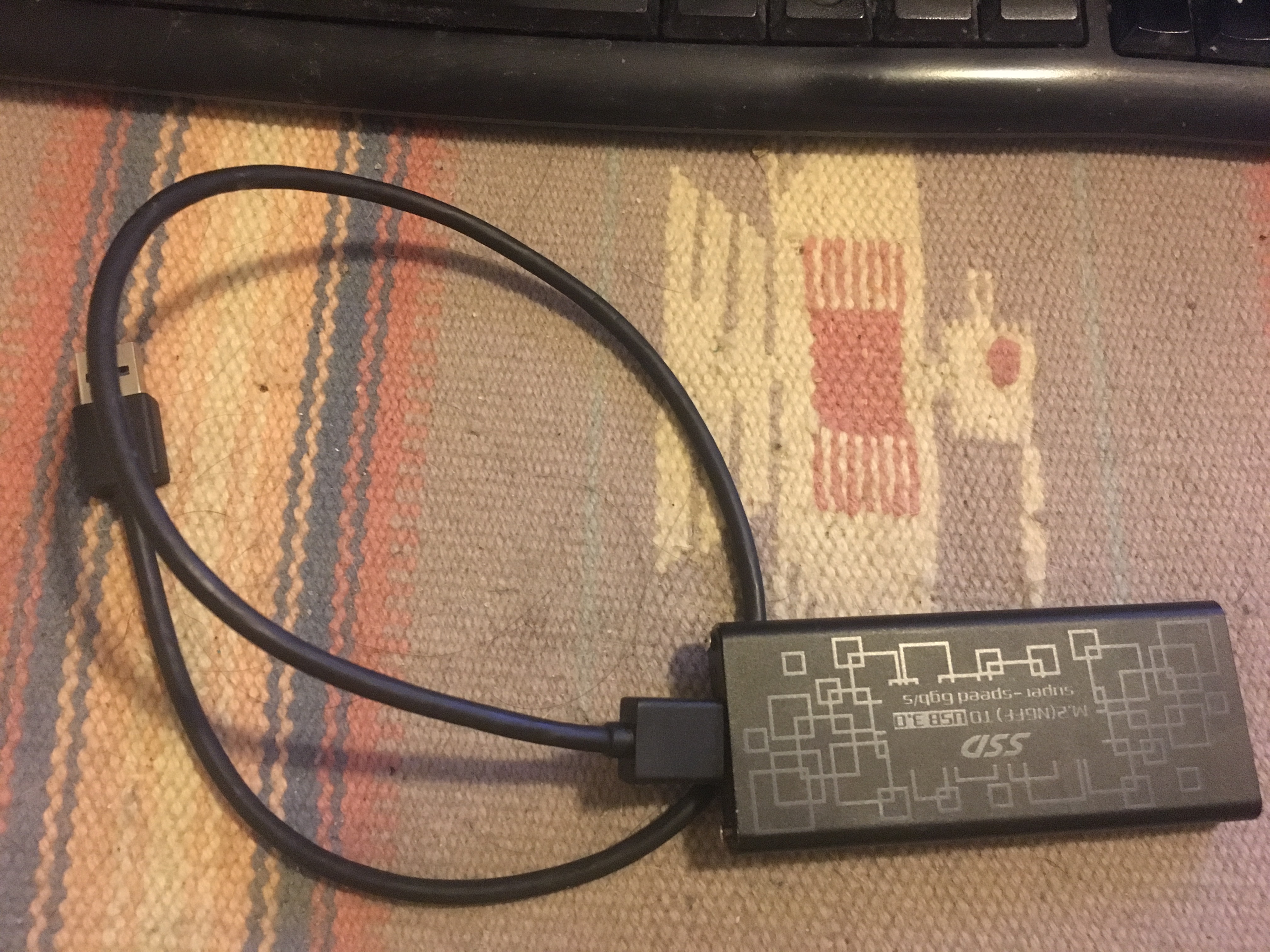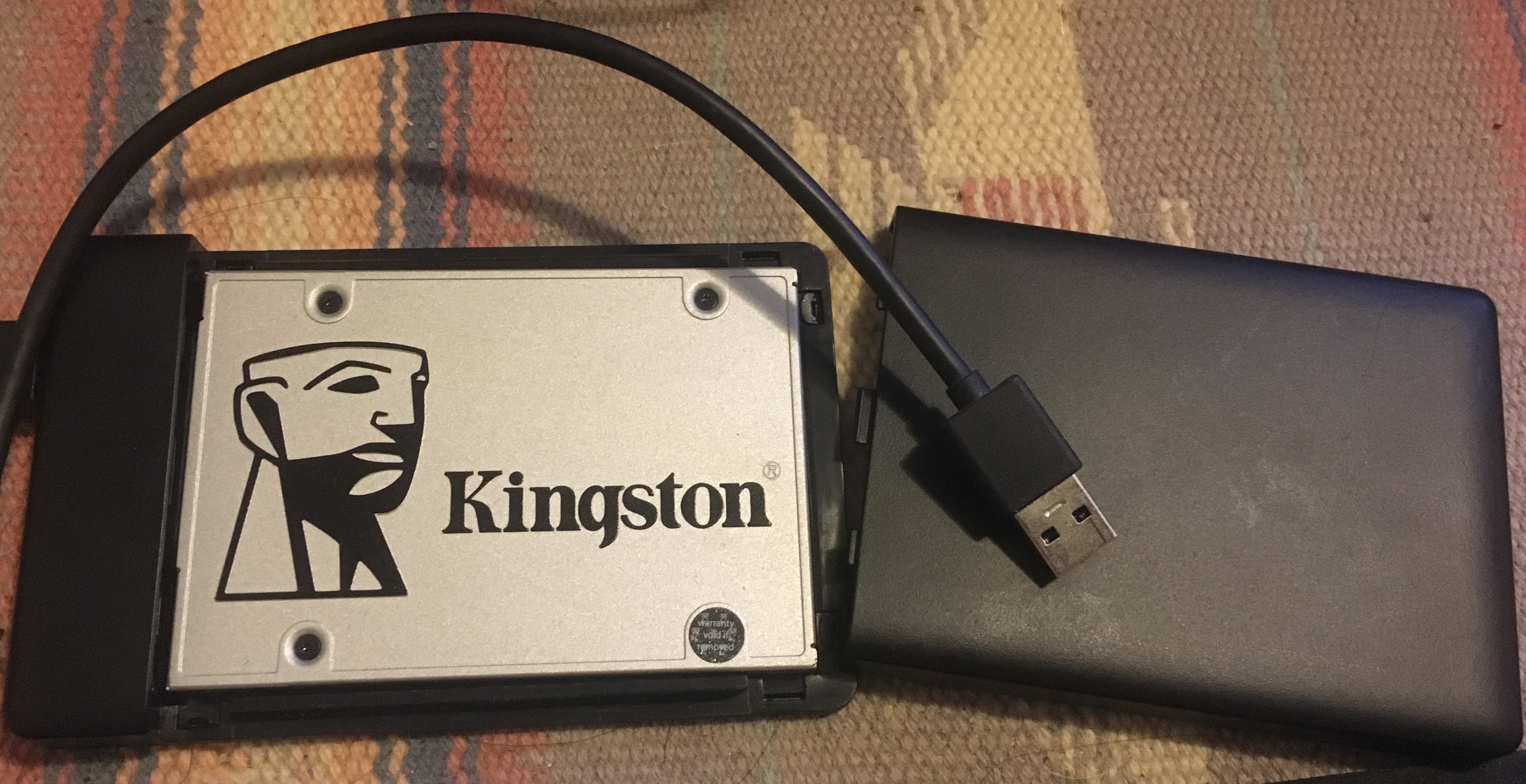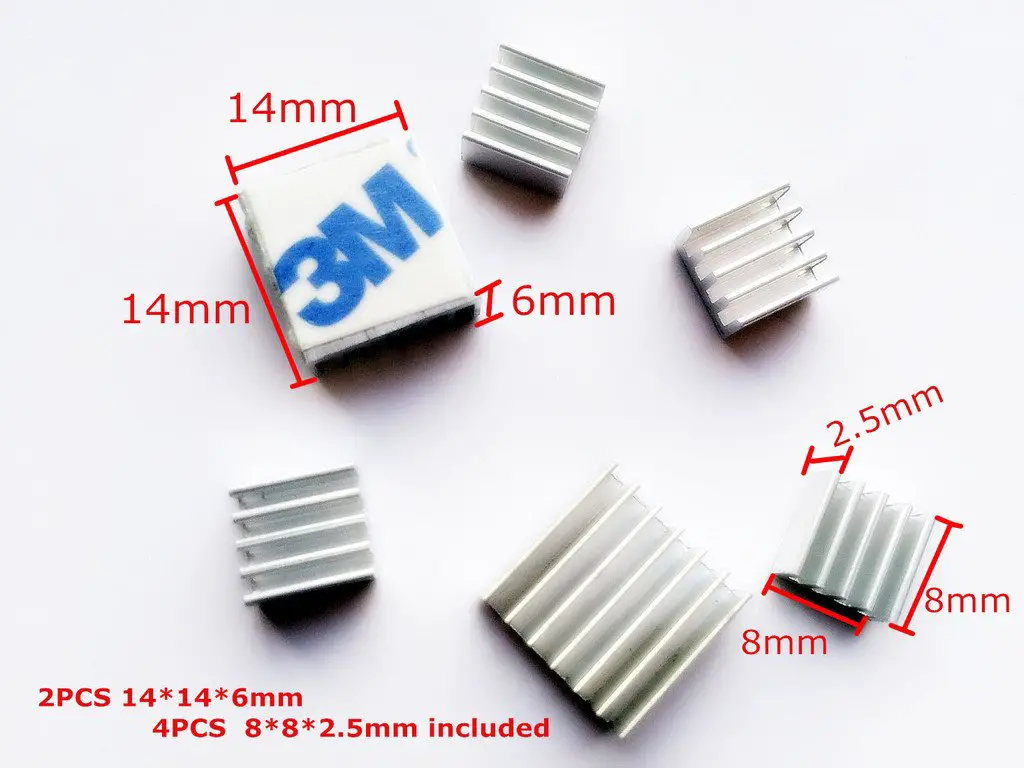; Date: Fri Jul 26 2019
Tags: Computer Hardware »»»» SSD Drives »»»»
SSD drives are fast, light weight, very reliable, and require very little power. That makes them very attractive as portable drives when away from home. We might need more data storage than is in our laptop making an external portable drive a necessity. While we can buy a manufactured external SSD drive, it's also very easy to build our own.
What's needed is two things:
- A portable enclosure with a USB or Thunderbolt cable matching our laptop
- An SSD that fits within said enclosure
- Any required tools to open the enclosure
Normally all that's required is to open the enclosure, insert the drive, then close up the enclosure. Voila, a DIY external drive.
I have built many external drives over the years. For example I might have upgraded a laptop hard drive, then build an external drive out of the original laptop hard drive. When I upgraded the M.2 SSD in my Chromebook, that left me with a 16 GB M.2 SSD, which made a very nice compact USB drive once I found a suitable enclosure.
There are two sizes of drives to consider:
- M.2 form factor
- M.2 SATA SSD's are older technology, more prevalent
- M.2 NVMe SSD's are newer technology, much faster
- 2.5 inch SATA form factor
The drives need to be in a matching enclosure. The enclosure will almost certainly use a USB-3 or USB-C cable, meaning the enclosure you choose must be compatible with the computer you have. Get an enclosure that matches the ports on your computer. USB-C may be the more flexible because it is easy to get a USB-C to USB-3 adapter.
- USB-3
- USB-C
- Thunderbolt is used on some MacBook or iOS devices
- Lightning is used on some iOS devices
Another use case is using a portable drive not with a laptop computer but with a tablet computer or a smart phone. With iOS 13 and iPadOS 13, Apple is giving us the ability to browse a regular file system and to even (gasp) attach an external drive to our iOS/iPadOS device. Until now Apple has refused this obvious bit of functionality, thank you Apple for noticing the usefulness of a file system. In any case this means it will be hugely attractive to carry around a portable drive along with an iPad Pro for doing content creation in the field.
Building a DIY M.2 form factor external USB SSD drive

This external container holds M.2 form factor SSD drives. It requires a screwdriver to open up, then you attach the M.2 drive to the board inside, and close it back up. It's very easy to set this up, and the result is a tiny drive you can put in your backpack any time.
The next issue is the choice between M.2 SATA and M.2 NVMe. They are incompatible and of course are different. From what I understand, NVMe is newer and more reliable and a lot faster.


Both types of drives use the M.2 form factor, but look carefully and you'll see the connector is different. The M.2 SATA drive has two notches, while the M.2 NVMe has one notch.
This means an M.2 portable drive carrier must be built for one drive type or the other.
To help you find the hardware you need, here are a few product searches. With the above information you should be able to sift through the choices.
-
M.2 SATA SSD Drives:
Amazon.com, Amazon UK
-
M.2 SATA external enclosure USB 3:
Amazon.com, Amazon UK
-
M.2 SATA external enclosure USB-C:
Amazon.com, Amazon UK
-
M.2 SATA NVMe Drives:
Amazon.com, Amazon UK
-
M.2 NVMe external enclosure USB 3:
Amazon.com, Amazon UK
-
M.2 NVMe external enclosure USB-C:
Amazon.com, Amazon UK
Building a 2.5 inch form factor external USB SSD drive

This particular external case is barely larger than the 2.5 inch drive. It requires no tools because the back simply slides off. Some use screws instead, which are also very easy unless you lose the screws. That's all there is to it.
These drives are of course a little larger but are still compact enough to carry around with you. For example during an overseas trip last fall, I had a 4 terabyte external portable drive that I kept connected to my laptop so that Time Machine would keep a backup.
- 2.5" SATA SSD Drives:
Amazon.com, Amazon UK
- 2.5" SATA SSD Enclosure:
Amazon.com, Amazon UK
- 2.5" SATA SSD Enclosure USB-C:
Amazon.com, Amazon UK










